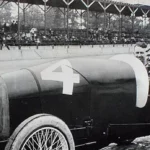On May 15, 1972, a bullet from Arthur Bremer’s gun forever altered the course of George Wallace’s life and the landscape of American politics. Wallace, the Governor of Alabama and a controversial figure known for his pro-segregationist views, was in the midst of a presidential campaign rally in Laurel, Maryland, when the unthinkable occurred.
A Campaign Trail Turns Tragic
It was a moment etched in history, a day when a presidential campaign rally turned into a scene of chaos and violence. George Wallace, the outspoken governor of Alabama, was campaigning in Laurel, Maryland when a series of gunshots rang out. The gunman, Arthur Bremer, a 21-year-old drifter, had meticulously planned the assassination attempt, his twisted thoughts and plans meticulously detailed in his personal diary. This chilling document, later discovered and made public, painted a disturbing picture of a man driven by a desire for infamy and a potent cocktail of anger and resentment.
Struck by five bullets, Wallace miraculously survived the attack, but the consequences were severe. The once vigorous politician was left paralyzed from the waist down, a stark testament to the destructive power of political extremism. Yet, from the depths of this tragedy, a surprising transformation began to take shape. Wallace, once a staunch segregationist, underwent a dramatic shift in his beliefs. Publicly renouncing his past views, he embarked on a path of reconciliation, seeking forgiveness from those he had once alienated.
Who Was Arthur Bremer?
Arthur Bremer, a troubled young man from Milwaukee, Wisconsin, sought notoriety through violence. His diary revealed chilling details of his obsession with both Richard Nixon and George Wallace, showcasing his disturbed mindset and premeditation. Bremer’s motives remain a subject of debate, but it is suggested that he saw Wallace as a symbol of the very things he despised. Some experts believe Bremer craved attention and infamy, and saw attacking a high-profile figure like Wallace as a way to achieve it.
Apprehended swiftly after the shooting, Bremer faced the full force of the law. He was convicted of attempted murder and sentenced to 63 years in prison. His sentence was later reduced to 53 years, and he was eventually paroled in 2007 after serving 35 years. Since his release, Bremer has lived a quiet life, avoiding public attention. In a rare interview in 2012, he expressed remorse for his actions, acknowledging the gravity of his crime.
The Enduring Legacy of a Shooting
The shooting of George Wallace sent shockwaves through a nation already grappling with deep racial divisions and political turmoil. It served as a grim wake-up call, highlighting the potential for political rhetoric to incite violence and the urgent need for a more civil and respectful public discourse. The event forced a nation grappling with racial tensions and political divisions to confront the devastating consequences of extremism.
The shooting also had a profound impact on Wallace himself. Confined to a wheelchair for the rest of his life, he endured constant pain and required ongoing medical treatment. However, the experience seemed to spark a change in his heart. Wallace publicly turned away from his old beliefs about segregation and began to speak out for racial unity. He continued his political career, eventually renouncing his segregationist views and actively seeking forgiveness for his past actions.
Even today, the George Wallace shooting serves as a haunting reminder of the fragility of peace and the enduring impact of political violence. It compels us to confront the dangers of extremism in all its forms and underscores the importance of fostering a society rooted in tolerance, understanding, and respect for differing viewpoints.
The 1968 Election: A Pivotal Moment
While the assassination attempt occurred in 1972, it’s important to look back at 1968 – a pivotal year in Wallace’s political career. Running for president on a segregationist platform, his campaign ignited deep divisions within the country. Wallace’s message resonated with a significant portion of the white electorate, particularly those disillusioned by the Democratic and Republican parties. He ultimately secured over 10 million votes, a testament to the deep racial and social divides of the time.
While he didn’t win the presidency, his 1968 campaign cemented his status as a controversial and polarizing figure in American politics. It also laid the groundwork for the events of 1972, as his continued advocacy for segregationist policies made him a target for those who opposed his views.
A Nation Reflects
The George Wallace shooting stands as a chilling reminder of the dark side of American politics. It’s a story about the dangers of extremism, the power of forgiveness, and the complexities of human nature. It also highlights a turbulent period in American history marked by social and political upheaval. The shooting, along with other high-profile assassinations during this era like those of John F. Kennedy, Robert Kennedy, and Martin Luther King Jr., underscored the volatility and violence that often intertwined with the fight for social change.
Elizabeth Stride met a grim end on the 30th of September in 1888 – just 10 minutes before Kate Eddowes met her end during the famous Jack the Ripper killings. Similarly, Frank Hammer also met his end because of brutal violence.
















